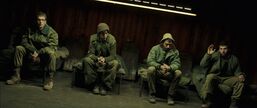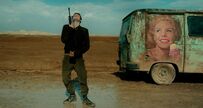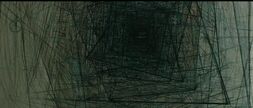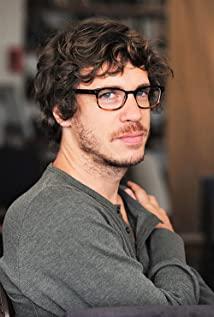Many famous directors have made anti-war films. I gave it a little thought, such as Coppola's "Apocalypse Now", Kubrick's "Full Metal Jacket", Polanski's "The Pianist", Li Ann's "Billy Lynn's Midfield War", Spielberg's "Schindler's List", Nolan's "Dunkirk", Eastwood's "The Banner of the Fathers", etc.
In the past, I always classified films depicting war as war films. In fact, the boundaries between war themes and anti-war themes are very clear, and the selection tendency of the works in terms of morality and human nature is also very different.
In the war film, the magnificent scenes, the smoke of gunpowder and the swirling artillery fire. The film uses such scenes as assistants for emotional advancement, and what is shown here is a certain spirit, doctrine, struggle and dedication. In anti-war themes, the battlefield is usually in the hearts of people, that is, when faced with the survival instinct, when faced with the death of oneself or others, the changes in human values. It may be kindness and sacrifice, or it may be the darkening of conscience washed away or deep wounds and guilt. The climax of the film is their introspection, the result of turning from the meaning of the external environment to the inward exploration.
I watched "Foxtrot" yesterday. Compared with other films that describe war, it is quieter.
The film is clearly structured and tells three stories around Jonathan's two deaths. The first paragraph mainly describes the grief of the father, the second paragraph is about the mistakes made by the soldier Jonathan while performing the task, and the third paragraph is the reconciliation between the father and the mother.
The shooting methods of these three stories are particularly contrary to "common sense". For example, in the first paragraph, the father's grief is directly described by the camera. The difficulty is that the adjectives are difficult to shoot. The film also uses a long close-up and a rotating overhead shot. An overhead shot in an enclosed space. In the second part of the story, there is only one central event, that of Jonathan's manslaughter of civilians in the car. Most of the rest are daily trivialities, and they tell the story of his father in large dialogues without any pictures. The third paragraph actually has only one scene, that is, everything happens in the same space.
This film can be viewed and analyzed from the above three acts as a clue, but behind the three acts of the film lies an invisible storyline. In chronological terms, Michael (the father of the dead Jonathan) was Jewish, and Michael's father died in a Nazi concentration camp. Michael enlisted in the army when he was a young man. During a troop march, he let the car behind him go first. After the car drove to the front, the mine exploded, killing everyone. Michael buried this matter deep in his heart. He seemed to marry a wife and have children normally, and when his son grew up, he enlisted in the army. One day, the troops came to inform him that his son Jonathan died honorably. Michael was in grief and deduced from his own experience that the troops did not even have the bones of his own son. The troops then informed the wrong person that another Jonathan had died. Michael was, of course, extremely angry, and this anger was incomprehensible to others. Michael used his relationship to recall his son Jonathan, who was on a mission, but Jonathan died unexpectedly on the way back. This incident also made Michael's wife unacceptable, and their relationship collapsed. Half a year later, Michael revealed everything during a conversation with his wife.
From Michael's perspective above, it seems easier to understand the predicament the character faces, as well as the obstacles the character encounters when trying to get rid of the inner pain caused by the war time and time again. It can also be seen that the pain of the war did not start with the death of his son Jonathan, nor did Michael witness the explosion of a landmine, but when his father entered a Nazi concentration camp. This hidden story is also the true intention of the film. In fact, every character in the film has a psychological dilemma brought about by the war, and everyone struggles in it in different ways.
Son died in war because of a camel. The young man in the car died because of a hall of beer. But that's not the biggest irony in the film. It can be seen from the invisible story line that the core of the film is Michael's self-redemption, so I think that the ancestral Bible that has been replaced by pornographic magazines is the greatest irony.
In addition, there are many ways to omit text in the video. For example, the display and decoration style of the father's house, the costumes, the behavior in the face of sadness, the fork on the face in the comics. These visual elements are created to make the text or dialogue seem cumbersome, they not only provide a solid proof of the invisible story line, but also describe the struggle of the characters in the environment, but also paint a picture of war, let us know that war gives What people bring is not only the explosion of fragments and the disappearance of life, but the mental predicament that has run through three generations and has been difficult to get out of for decades.
After the film was released, it caused quite a stir in Israel itself. Israeli Culture Minister Regev attacked the film ahead of its release. The point of Regev's attack is the manslaughter of civilians and the burial of vehicles by trucks, which smears the government's attitude towards dealing with such incidents. "Foxtrot" director Samuel Maotz was surprised by Regev's attack, but he also found it ironic, because Regev's attack just proved the accuracy of the story. Regev said the foxtrot was bad for Israel and should not have been established by a government agency like the Israel Film Foundation. But director Samuel Maoz felt it wasn't a film about the occupation or the Palestinians. This is a film about Israeli society. Second, a work of art should not aspire to imitate and reproduce reality, it should explain, illuminate or reveal its hidden aspects. This is exactly what Foxtrot aims to achieve. And soon after Regev attacked "Foxtrot," it became a fight for free speech and pro-art that sparked quite a debate in society.
Regev has made a lot of news online, such as the panorama of Jerusalem on the skirt on the red carpet at the Cannes Film Festival. Or implement the "Cultural Loyalty Act", which stipulates that artists or art institutions are only eligible to receive public funds if they show loyalty to the state. This has led artists to burn their own works, saying the law will make art work for the government and make creators think about an 'agenda' without which art cannot survive. When someone orders you, there is no more art, only propaganda. Of course, the so-called understanding is limited to news only, and there is no need to make judgments.
In my country, I am not sure whether a film should be subordinate to free art or propaganda. Movies can be national or national; it can also be human or world. From the perspective of war films, modern wars in China are all about resisting aggression, and the national conditions are different, so the topic cannot be copied, so this is a rather big debate. But I have no intention of leading others with my thoughts, because from the film industry I have been exposed to, the most obvious so-called conflict is not here. At present, the mainstream conflict in the creation of the industry is whether we need "advanced", because the audience cannot understand the deep things. This is catering to the greed of the audience, not the values. This is why I put quotation marks when I mentioned common sense above.
It seems that for us, the ability to understand is the origin of Foxtrot, which is also quite absurd.
It can be seen that "Foxtrot" may not be able to achieve shocking results in business, but in reality it involves many issues, especially the film's irony and resolution of heroism and war. The government's positioning of Israel as its own has become a source of discussion, ranging from support to extreme confusion and even outright denial. The questioning of the ideas expressed in the film is also the subjective assumption and speculation we have when we understand history and art. But no matter what, "Foxtrot" uses a specific time and space as the context, which stimulates people's introspection of human nature, the past and the present in reality. Whether this will change in the future, I don't think so. I don't think movies can really change the world other than to provoke momentary debates or individual behavioral differences. In other words, in the exploration of the breadth and depth of the personal, social, historical, technological, and cultural fields of film, communication can only account for one of them, not all of them.
So I think it's better to make art free and pure, it's just a magic door to other dimensions, where we can experience different lives in different time and space, where there is love, hate, violence and death. When we finish a piece of "Foxtrot", we will return to the original point. At this time, we have reconciled the regrets of the past and have more expectations for the future. Speculation about war also lingers in our minds.
View more about Foxtrot reviews











